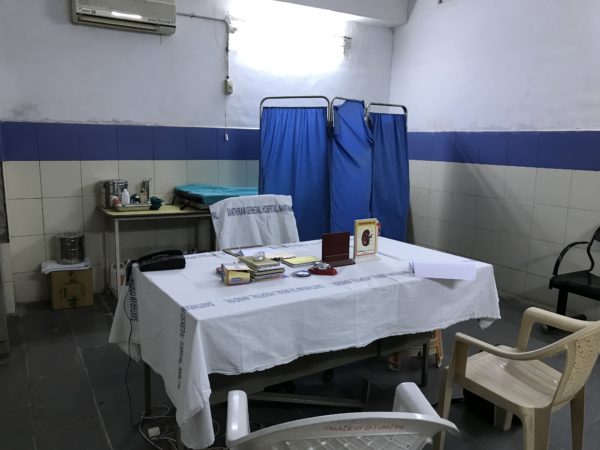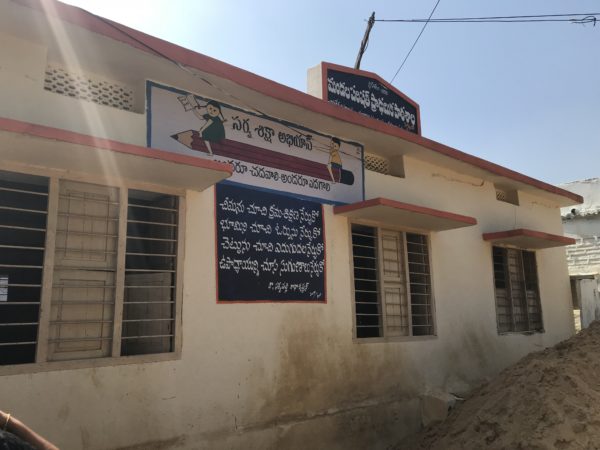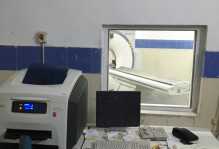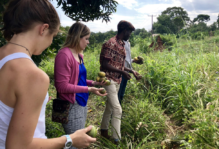Urology and Public Health in India
Urology Department
Before coming to Santhiram, many villagers attempt to treat their illnesses locally through RMPs (who I have written about in my previous blog), according to a PG (post-graduate) student. These RMPs prescribe medications that only provide temporary relief because they treat the symptoms but not the cause. For example, steroids are often prescribed because they can mask the illness by relieving symptoms. Antibiotics are also prescribed even when they are not required. These prescriptions can actually harm the patient not only because these medications have side effects but also because if the patient is not experiencing the symptoms, he/she may delay going to a doctor. This tends to especially delay symptom onset in patients who have chronic conditions rather than acute conditions, which can be problematic because it can lead to kidney failure. The common conditions seen by a urologist include renal stones, benign prostatic hyperplasia, hydroutereonephrosis, and pyelonephritis.
While observing in the urology department, the physician who I was shadowing began asking a PG student and me questions on functions of the kidney, possible causes of kidney failure, and methods of diagnoses and treatment. At first, I was a little confused because I am not even a medical student, set aside a PG student; I knew that I didn’t know the answers. But, soon, I was enjoying answering his questions based on the basics that I learned about the kidney in physiology because it got me thinking logically.
Community Medicine, a.k.a Social and Preventative Medicine (SPM)
I have learned a lot about public health in India during my time in SPM. I want to tell you everything that I have learned, but that would make this blog too long so I will tell you a little bit about healthcare in India.
During my time in SPM, I went on field visits in the morning and discussed what I have observed with a professor at Santhiram. One of the first things this professor told me was that conditions in India are not improving as much as they could be because of corruption and a lack of political commitment. The government often establishes hospitals in cities and towns, but most of the people live in rural areas. There is no healthcare available in tribal areas. At the village level, volunteer health workers are used; these volunteer health workers are trained for around six months, during which time they gain general knowledge on how to treat common conditions such as fever and cold.
In addition to these community health workers, there are Anganwadi workers (who provide supplements and education to children and pregnant women), trained dai (who are trained to deliver babies safely), and ASHA workers (who are accredited social health activists). If these workers are unable to handle a patient’s problem, they are referred to a subcenter, which has one male health worker and one female health worker who are trained for 1.5 years and can treat minor ailments. If the problem still persists, they are sent to a primary health center, where a doctor and staff nurses are available. Next, they are referred to community health centers or district hospitals, and finally, they are referred to teaching hospitals or super specialty hospitals.
This is the process of referral that should occur in theory, but this referral process is not often implemented as efficiently as it could be due to the corruption and a lack of political commitment that I mentioned previously. In order for healthcare to be distributed equally, participation of people is necessary because people must use the services provided by the government for those services to have an impact. For example, when eye camps or family planning camps are set up, people must come and get a check-up or be educated for those camps to make a difference in those people’s lives. The people also have to be involved in planning, implementing, and evaluating these services. Moreover, intersectoral coordination is essential. It is not enough for the health department alone to be involved in health care; for example, the education department must be involved because people can be better educated about health if they can read and write.
I went on two field visits through the SPM department. One of these visits was to a government school in a village called Chapirevula, where I learned about how free vaccinations are given to children on a scheduled basis in a village. Another one was to a government junior college in Nandyal, where a health educator gave a speech on malaria and dengue fever in India. This speech was actually shown on TV later that day, and it was an interesting experience for me because I was called up to sit in the front facing the audience.
That was the end of this week. Next week, I will be going on more field visits and camps, and I will let you know how it goes!







No comments.
Comments are currently closed. Comments are closed on all posts older than one year, and for those in our archive.